Efficiency facilitates the creative process by enabling more time for exploration as less time is needed for the final production. — Casey Reas & Chandler Williams, FORM+CODE in Design, Art, and Architecture
Creating a plan to make a difference is easy. Sticking to the plan—and adopting it as a habit—isn't.
That's the difficult part—the reason why not everyone will succeed in the long run.
Think of what you want to do. Commit to it. Set deadlines. Involve others in the process. Do at least ten minutes of it every single day. Make the habit.
This essay is part of the book I am writing on how to organize your life in order to create more and better. If you want to receive new parts of the book as I write them, please join here, and check other posts that will be on the book.
The simple shortcut: the way we respond to the things that we can't change can instantly transform our lives. "That's interesting," is a thousand times more productive than, "that's terrible." Even more powerful is our ability to stop experiencing failure before it even happens, because, of course, it usually doesn't.
Happiness, for most of us, is a choice. Reality is not. It seems, though, that choosing to be happy ends up changing the reality that we keep track of.
The way you see the world—and the way you deal with things—is often more important than what is actually happening out there.
When all you have to worry about is leisure, it is way too easy to get trapped in social media.
The moment you check your Instagram feed, you go to your Facebook timeline (which can be long). Then, you check your email, and look at the new tweets on Twitter. After this, everything is ready for you to repeat, and check all over again.
Networks update at such a fast pace we could be online — just checking out more and more stuff — the whole time.
The thing is, it does not really take that long to check, but it is comfortable and entertaining to be constantly checking.
I previously wrote about being a whole week without email, and what its effect was. Also, I tried methods to disconnect from networks — just to be focused and enjoy other things.
Up to a point, social networks are a waste of time — having a healthy relationship with them is important. What else could you invest your time in? Get out of the trap.
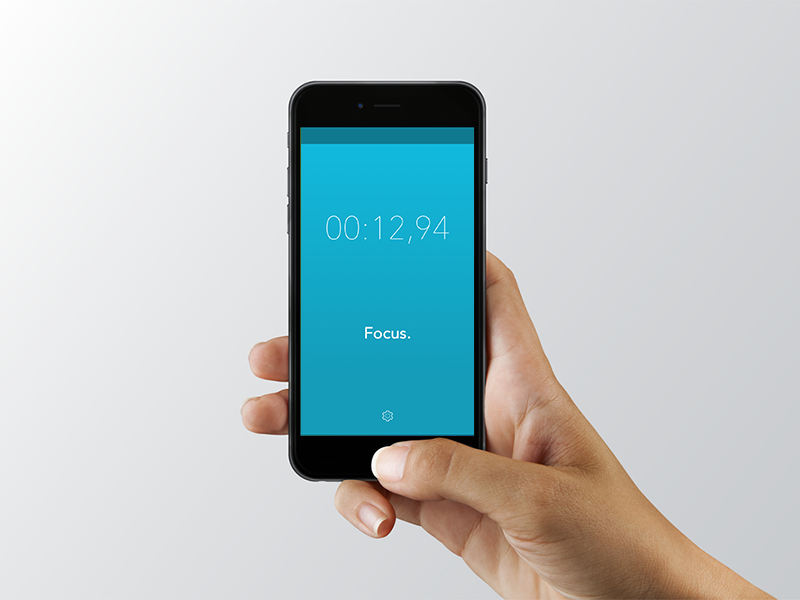
After a few months without updating, I decided it was time to tweak Everfocus a bit in order to fix problems and incorporate new features.
Version 1.4 brings bug fixes, theme updates, and more:
If you want to be notified when Everfocus goes free, you can join this mailing list — and I'll notify you.

Since I began writing this blog, one of the topics that has appeared the most is how to be efficient and productive — tips, reflections, or workflows in order to make things easier.
Here is a selection of my favorite articles of this theme.
Pretty often, book [or movie or series] characters push others to get things done — to get the most out of themselves.
These characters seem to be powerful, wise, and to have done great things before, but they don’t really exemplify it. They don’t take action.
Instead, they motivate others to pursue their goals. Goals that — while seemingly impossible at first — are achieved in the end. Even when those others thought they were not capable of doing it.
Is someone motivating you to achieve your goals? And, more importantly, Who are you motivating?
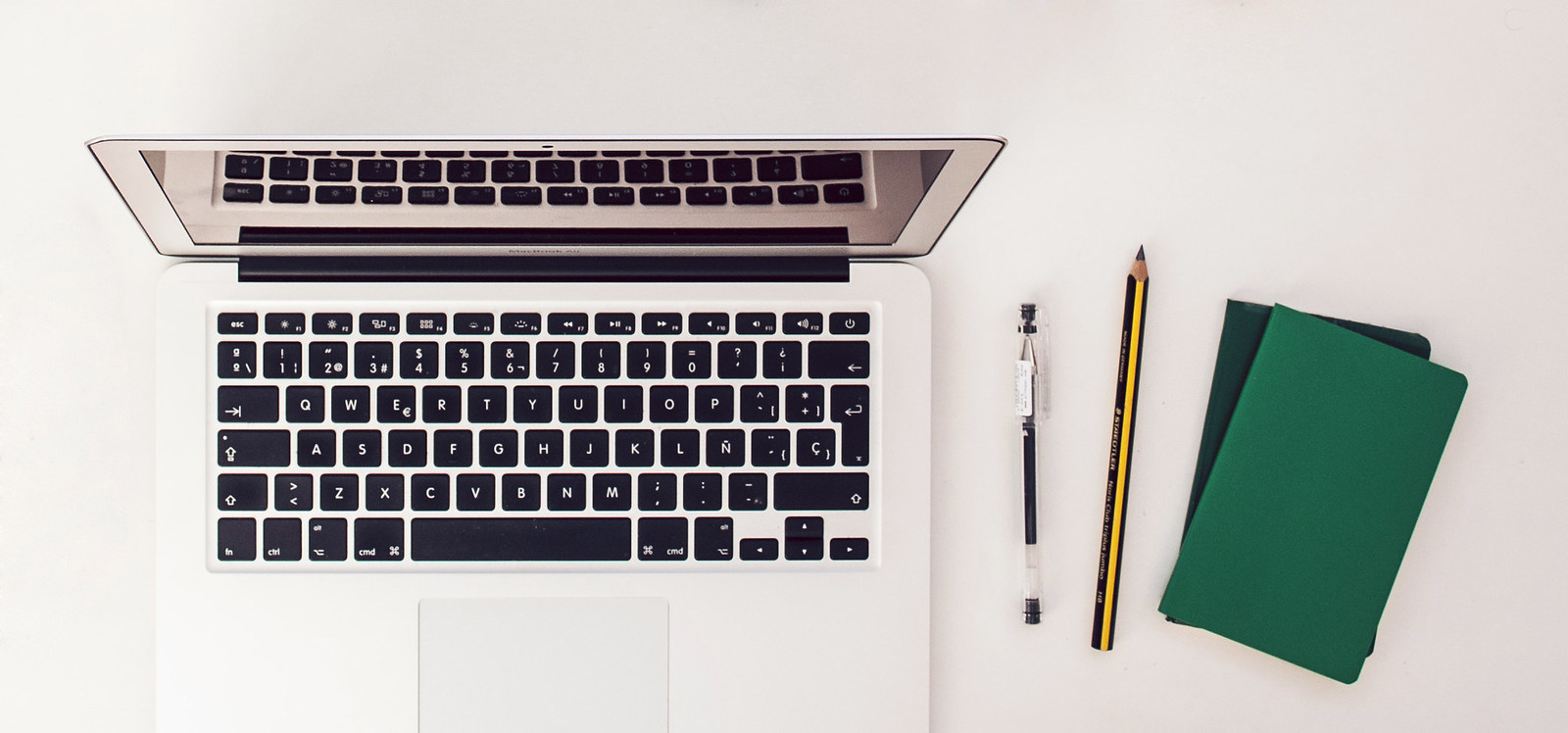
There may be other reasons why I write this blog which did not came to my mind when writing this post [while sitting on a flight from London to Spain] but these are, probably, the most important ones.
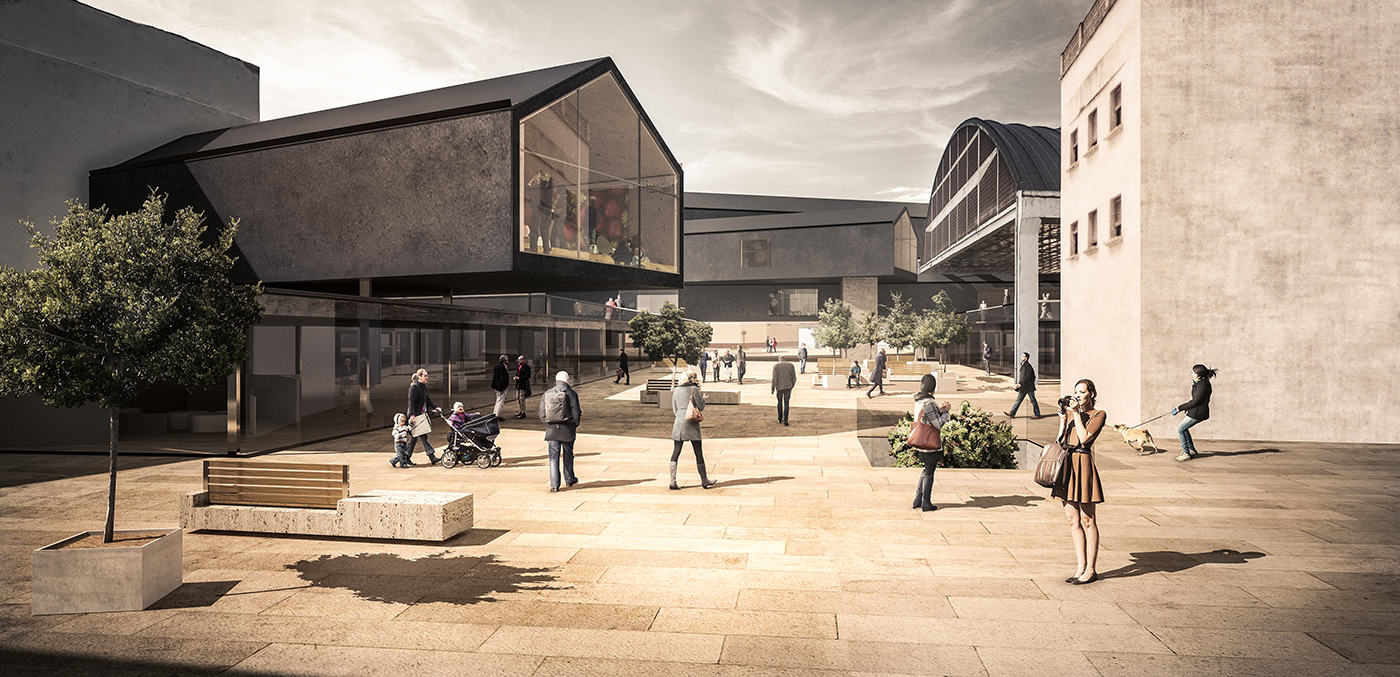
How to structure the work you need to do for your final architectural project.
There is a clear reason why there are no tight guidelines on what to submit for the final architectural project: Each project is different.
You should do whatever your project needs to be properly understood by others. — Architecture Teachers. Always.
The present article tries to fulfill this lack of information. Please, understand that I am not responsible for any problems that following this guidelines may cause. They suggest a way of doing things to complete a final project of architecture which worked for me and my project. And, as I mentioned earlier, each project is a totally different story.
I have divided the checklist in various categories, each of them developed later on.
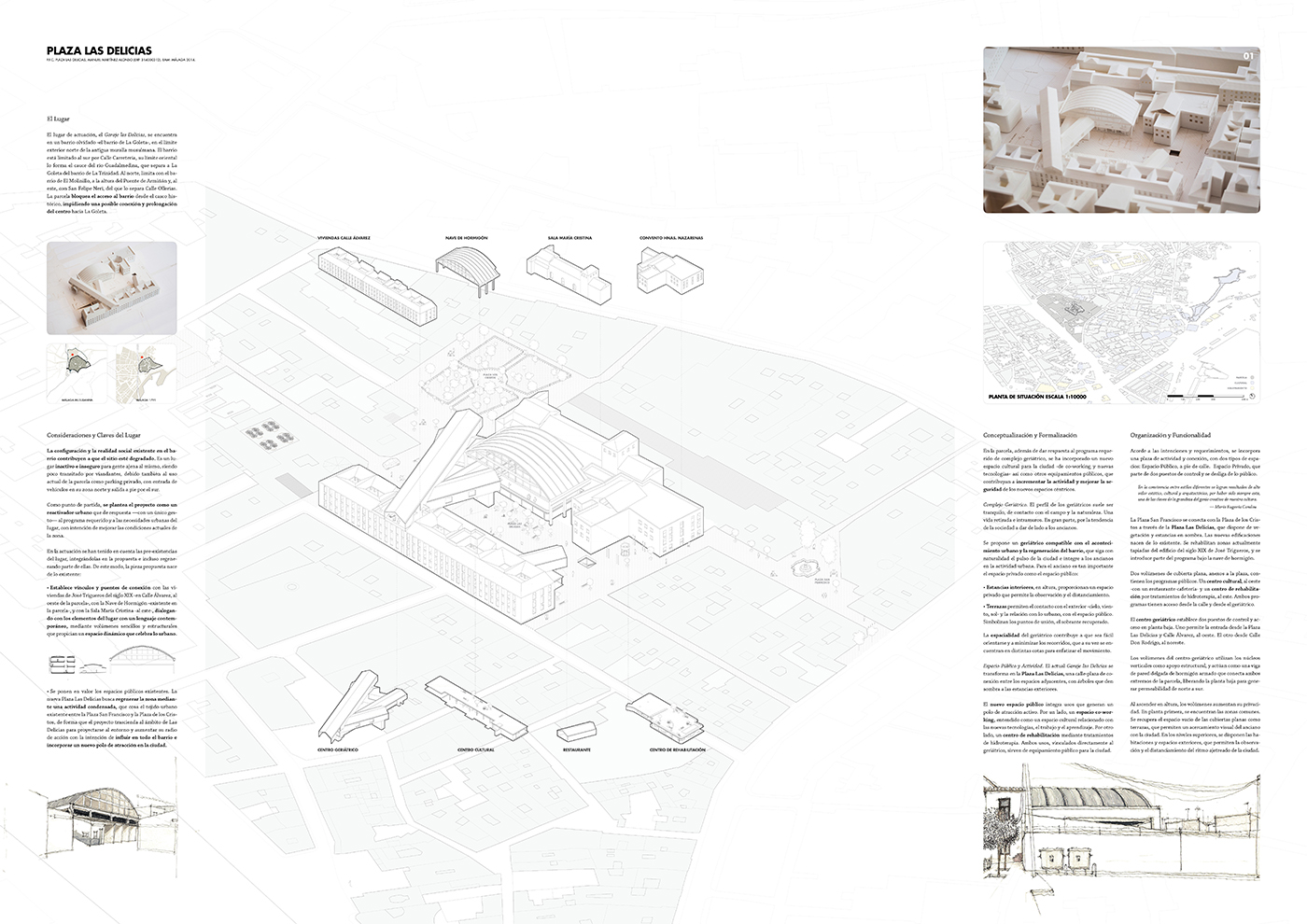
As of 2014, project boards should be presented in A1 format and laid out in landscape orientation. Usually, the amount of boards submitted is around 12 and 24 A1 formats.
The contents should develop the following sections — usually in the order shown.
Conceptual Approach. Analysis, intentions, strategies. A key part in any architectural project. However, what you need is an analysis deep enough to help you develop your project.
Urban Design (Spatial Environment). Location of your project within the city and its relationship with the surrounding areas.
Architecture. Drawings of the project, including; plans, sections, elevations, and other details that might help to better understand your project, such as perspectives or axonometric views. This section should include rendered views for the visualization of the main spaces of your project.
Construction. Details of the constructive systems used in the project. The details do not necessary need to represent real sections of the project, as long as they show the main constructive solutions. In my project, I detailed constructive systems at 1:20 scale, adding 1:5-scale zooms of the encounters between different building elements.
Structures. A module to show that you are capable of solving part of the structure of a project you designed—even if solving it means calculating it or delegating it to a consultancy. Any of these methods are perfect real-life case scenarios.
Installations & Services. Plans of the following solutions at an schematic level: Electricity and lighting systems (detailing the types of luminaries); Fire evacuation systems and routes; Water drainage; Water supply; Ventilation and air conditioning.

On previous submissions, the presentation of each final project has been done by students in front of three A1 summary boards. They should sum up all the points mentioned before, to explain the whole project at an schematic and conceptual level. Contents should be organized explaining first the general aspects of the project, finishing with technical details and particularities.
These boards need to be mounted on a 1-cm foam-board support.
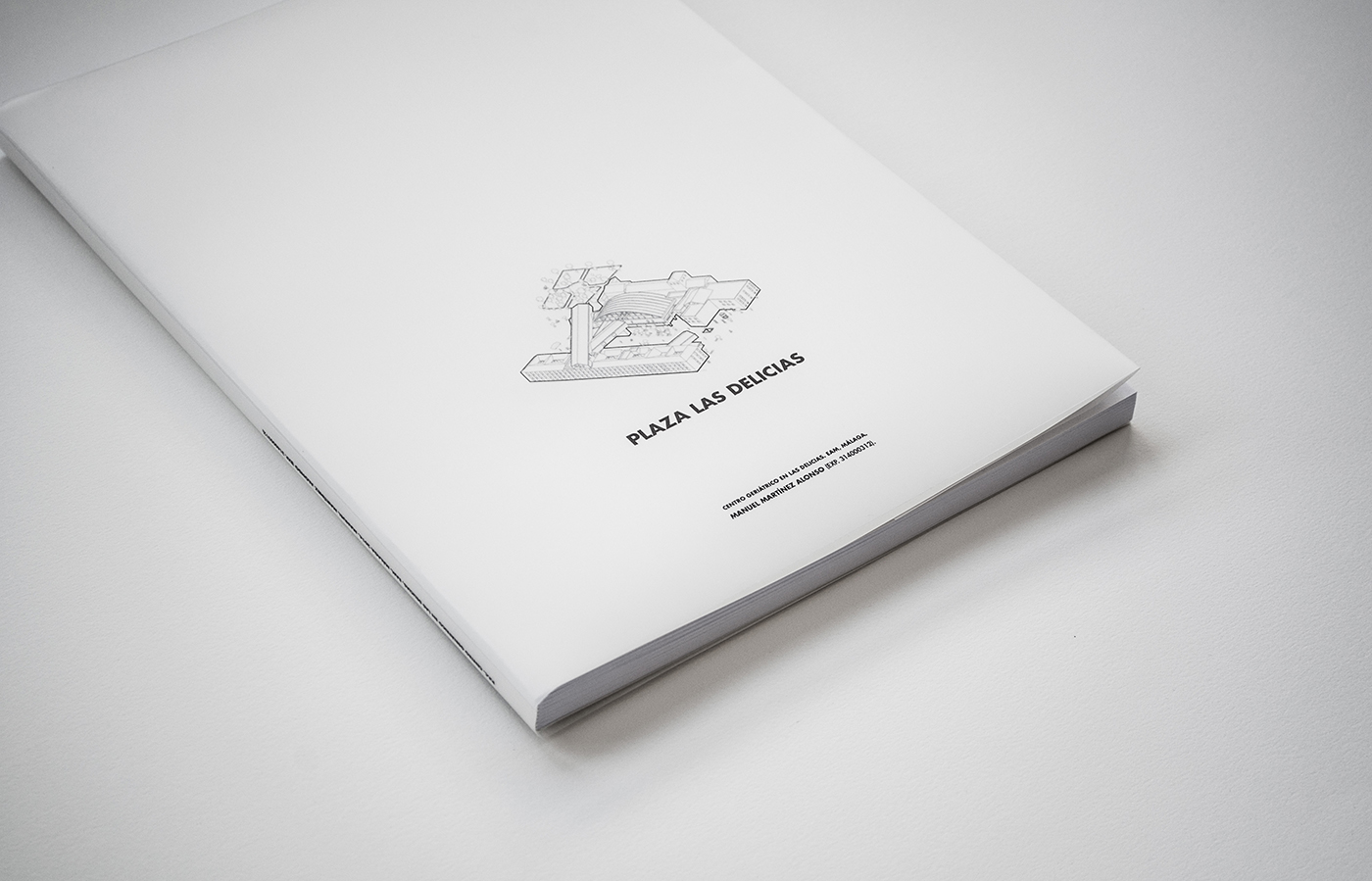
For each of the following categories, here is a summary of what is needed to be include in the documentation file.
Analysis and Conceptual Approach. Extensive explanation of the analysis and things that have been taken in account in the initial stages of the project, as well as a detailed explanation of you conceptual approach to develop the project. This initial part also contains location drawings, programmatic schemes, and some other data of the project.
Constructive Solutions. Explanation of the constructive systems used in the project, as well as their compliance to the CTE (Código Técnico de la Edificación) and other codes that may apply.
Structure. Structural systems should be described at a conceptual level. Calculations should be attached at the appendix of the documentation.
Compliance of CTE. A section for each of the DB (Documentos Básicos), proving and explaining how project decisions help the project to comply with the regulations.
Installations. Systems adopted and calculations made for each of the categories.
CD. Remember when Compact Discs existed? Even though we are living in the twenty-first century, organizations still ask to burn data into CDs, instead of copying folders though the Internet or using flash memories. Some of your computers probably don’t even ship with a disc burner. For the project, you are required to burn all of the information contained in the initial checklist into a CD, so the jury can look at your project from home.
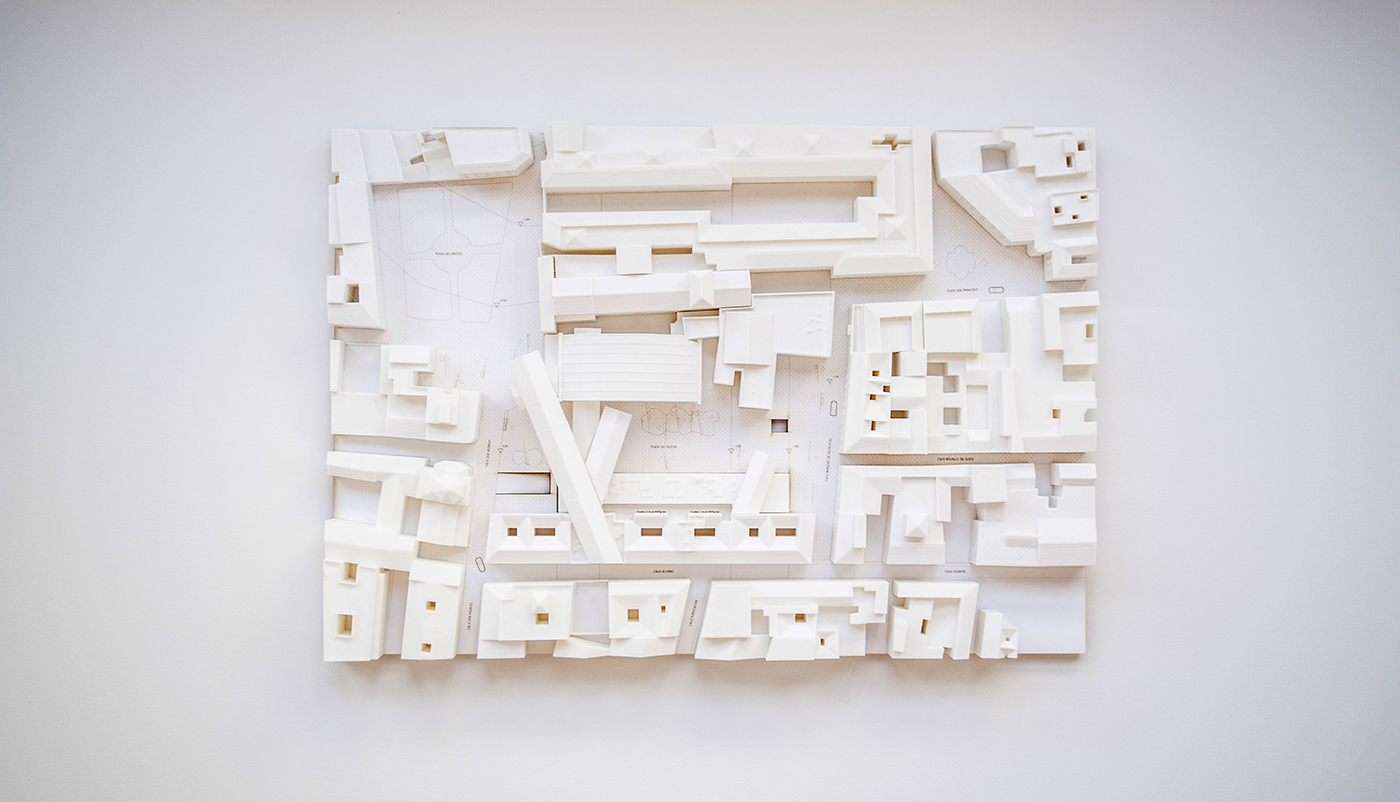
The scale depends on your project and on how your project can be better understood by others.
Some projects — that have a strong landscape component — require more than a single model. Usually, building models are done at scales ranging from 1:200 to 1:500.
My project has an important urban role. Would an urban proposal be suitable as a final project? Do I still have to define a building which I can then detail?
Some briefs are less clear about what their intended outcome is, and have a bigger need of analysis and urban study than others [briefs] which are more defined, and set a clearly defined outcome, both spatial and programmatic.
Because the purpose of the final project is to test your abilities in every single category previously mentioned, every project should have a constructed part — which is to be detail in terms of its architecture, construction, structure, and installations.
This is why I usually recommend to choose architecture-focused briefs. Other topics may be more interesting for its development, but the way we are marked by the jury does not exactly correspond with those types of projects.
Even though an extensive analysis and a detailed urban plan are needed for every project, you should have all this in mind from the beginning, even before of choosing a brief. After all, you will need to detail a building.
Don’t obsess with any of the parts. You need to get a project done as a whole, and the different sections of it need to be closed as soon as they are ready. This project tries to prove that you are capable of solving every single part at a well-enough level.
This article is part of the Getting Architecture Done series. A series of posts about architectural methods, workflows and tools, titled . If you want to be notified when other articles are posted, go ahead an subscribe here.
It does not exist. Or, at least, you have no way to know it while you are doing it.
Do not put that much effort. Take decisions quickly, and ship things often.
Every project should be considered important, but it is important to finish and release them. And then, afterwards, polish them—as they are being used by your intended users.
A book is not complete until there is people reading it. A website is undone if users can’t browse it. A product is not finished until clients can pay for it. What is left in your project until it is ready for its public?
Seems crazy to me how easy it is to focus when accessing the Internet is just not there. The train without Wi-Fi gives you a span of precious time. Compared to office hours, the minutes you spend on the train are a gift to do something different.
Forcing ourselves to disconnect and create those moments is not that easy. Your brain gets bored of doing stuff after a while, and the one-minute-visit to Facebook quickly kills your 30-minute potential creative gap.
—
This essay and The Call Receptor were written in a train from Madrid to Málaga in just 20 minutes. No email, no Facebook, no Twitter.
Projects, projects, projects. More projects.
Which of your current activities would endanger your long time goals if you stopped doing them? Those are the important things in your life.
In addition to important projects, are side-projects. Projects as personal research in fields where you want to practice deliberately or learn new stuff on your own. These are projects that won’t bring you money in the short term and won’t affect your long time goals if you kill them.
To make things work, our overhead needs to be kept low, setting a focus on our main projects and responsibilities. But side-projects are also necessary; Small projects to procrastiwork with each once in a while and disconnect from our main duties.
Make clear which of your current projects are important to focus on them, and which ones should be worked on the side.
This article was written for us. To organize the work of the projects I am currently involved in. To make them more effective. The following are definitions of three strategies we are going to test in the incoming months.
Stories help up spreading ideas. Explaining concepts is a lineal process suitable to be compressed in a talk.
A talk empowers the speaker to be concise, to highlight the important, and to clear up the ideas to be transmitted.
Concepts, projects, ideas. They all can be formalized as small talks, bits of organized and synthesized content to be spread easily, giving a speech or sharing a couple of slides.
Everything has a by-product. — Jason Fried
In the digital era, a vast amount of content is produced daily, often with a defined purpose.
Spending a bit of time looking for extra possible uses —even before creating— can multiply the effectivity of creating something, and increase your productivity.
A by-product is the result of using a product for a purpose different than the one it was originally created for.
This leads to the next point: passive income.
Passive income is the opposite of active income. It involves obtaining money without having to constantly interact with the content, as you already created it and it is in a place where people can pay for it.
Passive income can be generated in different ways. Writing a book, creating an app, designing icons, taking pictures, or creating templates, are some examples.
Contrary to directly selling your products to customers, distribution is usually done by someone else, who gets a share of your product. For instance, the App Store and the iBook Store retain thirty percent of the income generated with your apps and books, and frees you from setting up your own server to distribute and sell content.
On the lines of working towards by-products, a passive income framework is a powerful tool. Your content, created for some other purpose, can be available for sell online.
A passive income framework consists in organizing —before production— where and how will your by-products generate income.
There are different mediums in which content can be distributed online to generate passive income, as I will show in an incoming article.
Thanks for making it so far. Hopefully you find ways to apply these strategies to the work you are already doing. If you do so, I would like to hear about it.
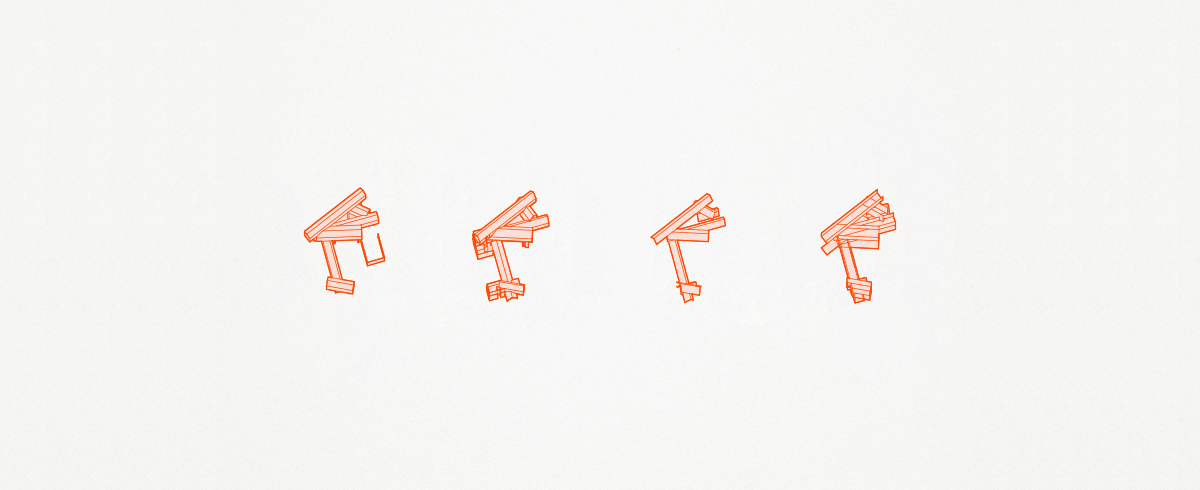
Having some action taken to get the feel of the product you want to make is a fundamental step before risking too much. As it happens in architecture and other creative fields, early prototypes help judge ideas, discarding bad ones and pushing forward the best ones.
The best way to have great ideas is having lots of ideas. — Linus Pauling
Ideas are just ideas. An idea can be formalized in many different ways. This is why, even though you have a concept to start with which is valid does not mean you are going to shape it in the correct way in your first try.
Iterate, abstract problems into small decisions which can be taken independently. For instance, if you are designing an appliance, two separate decisions could be its material and its shape. Even though one decision may affect the other, you could decide one ignoring the other. Abstracting problems makes evident which decisions need to be taken in order to move the ball forward.
Design methodologies do not work the same for everyone. But trying other people's processes of design can help you find your own. What do you think?
Everyone gets organized at some point, they just might not be around for it. — Sue DeRoos
This sentence was quoted by Erin Doland in her book Unclutter Your Life In One Week:
DeRoos comment was morbid, but absolutely true. At some point, someone is responsible for sorting, purging, and getting your affairs in order - either you do it while you’re alive, or your loved ones do it after your gone.
(via)
Go that way, really fast. If something gets in your way, turn.
— Curtis Armstrong in Better Off Dead
Fail fast, it is the quickest way to succeed.

Today, I want to show this thing called Hipster Ipsum. It is a hipster version of the widely known Lorem Ipsum, which serves as a placeholder text generator.
The following paragraphs have been generated with Hipster Ipsum, do not try to understand it.
8-bit Odd Future pug put a bird on it. Swag Tonx cornhole, forage Odd Future ethnic gluten-free chia Truffaut shabby chic trust fund tattooed try-hard Echo Park banh mi. Keffiyeh readymade ugh flexitarian street art, locavore yr Austin retro blog bitters viral.
Disrupt Echo Park vegan roof party. Semiotics Marfa Blue Bottle, small batch pork belly chia fixie Helvetica.
Next level lomo you probably haven't heard of them, narwhal McSweeney's hoodie Neutra sustainable Odd Future fashion axe cliche ethnic drinking vinegar chambray. Art party kitsch yr ethnic, pop-up High Life beard Terry Richardson jean shorts 3 wolf moon Wes Anderson tattooed blog.
Blog post-ironic Pitchfork, Odd Future kale chips 3 wolf moon drinking vinegar Shoreditch cliche bicycle rights church-key irony gastropub authentic synth. Trust fund Bushwick fixie Schlitz fap dreamcatcher. Austin small batch swag pug kogi. Pop-up lo-fi cliche keffiyeh, fap blog Etsy ethnic.
Hipster is the new Alternative.
Check It Out | Hipster Ipsum
Byproducts are collateral outcomes from an activity which main purpose is not that product.
Many times, we produce things that we ignore or we do not take advantage of. The small parts that conform a big project can have value themselves.
“When you make something, you always make something else. You can’t just make one thing. Everything has a byproduct.” — 37 Signals
Work can be structured in order to force byproducts and plan what they will be used to. For instance, a book could be a byproduct of a series of blog posts, which initial intention was not a book. This approach provides benefits without having to do a lot of extra work, but being conscious from the start of potential byproducts can help making byproducts useful without extra effort.
An example is my blog’s Link Pack. It usually contains things I found on the web over that week, without specifically looking for content for those articles. I store them as they appear. Those articles are a byproduct because even if I do not use the links for the Link Pack I am still going to read them.
Byproducts can also help motivating you to accomplish big projects. Giving importance to small parts of a larger project —understanding those small fractions of the big project as byproducts— will help completing the whole thing with small steps, getting done the project in small chunks that are useful on their own.

People develop a general tendency to interact with multiple flows of information at the same time when working. We tend to multitask.
When we multitask, we perform many things that fool our brain into thinking that work has been accomplished.
This produces a false sense of productivity in our mind. Even if your main task has not yet been started, the tasks of checking your email, making a call or simply removing files from the trash can of your computer can create a sense of achievement in your mind.
The first step to avoid this problem is to establish self-awareness. Be conscious. One step forward is to avoid doing any of these smaller tasks at the same time you are working on that big project. To leave all of this 'stuff' until you have finished the task at hand.
This is ideal, but difficult.
Is reading this post helping to move you current project forward?
Thanks to Rory Avis-Foster for reviewing my draft.

Last fall, in order to disconnect from the Internet on my holidays in New York, I decided to deactivate my email during a week, from the 11th to the 18th of October.
First, I removed my email account from the iOS mail app settings, so I would not get any alerts whenever I got wifi connection during the trip.
Second, I programmed an automated reply for incoming mail, so people who emailed me knew I was on holiday. And last, I gave an alternative contact to some of my clients, so they could reach me in case they had an emergency.
I got back home from the trip the morning of the 18th. That night, at 3 am, I checked my email. My Inbox had a total of 167 new emails, just from that week. 75 out of those 167 were classified by Gmail as social emails, from Twitter and other services.
It took me 23 minutes to go through all of the email. How much time would I had spent looking at each email as they entered my Inbox during the trip? Surely more than 23 minutes.
It is not always possible, but when it is, services like email should be processed in batches. As I wrote previously, email can also be filtered in order to prioritize some remitters from others in order to avoid getting distracted with email.
How often do you check your email?
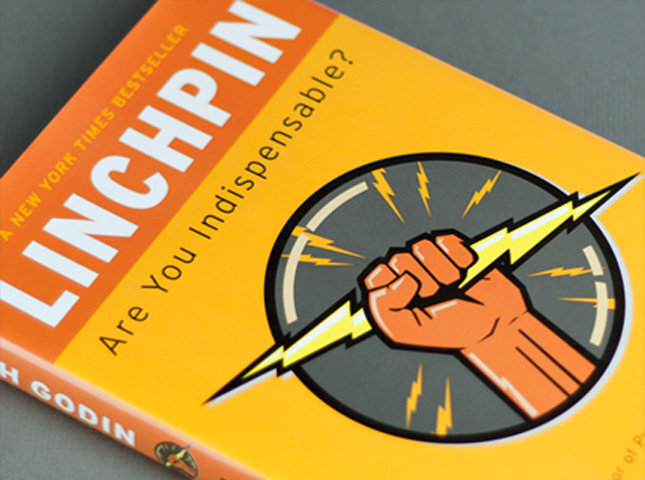
Pretending that you know what you are doing is almost the same that knowing what you are doing. The point of finishing is not finishing, is getting other things done. — Seth Godin
Get things done, so you can do more.
(Via)
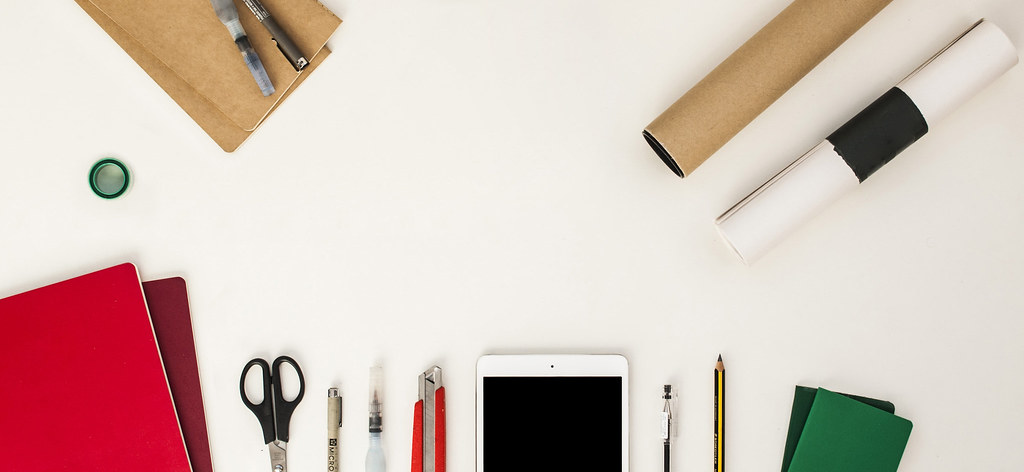
Working time is commonly conceived as a time frame with no distractions. When you work, you are supposed to be as efficient as you can, and not let anything get in your way until you finish. It is widely known that some enterprises even block access to common distractions so workers don’t waste their time, but this is not a real solution.
Contrary to this model, deliberate breaks can improve your productivity while allocating a time for those distractions, which are needed by our brain in some way.
Breaks are great. But I feel guilty taking too many of them. — John P. Trougakos
Deliberate breaks provide you with time to do things that are not strictly work-related and let your brain rest. Removing, at the same time, the guilt of distractions. Here, tasks and activities not related to work have their own span of time to happen.
My working hours are structured in fifty-minute working blocks and five-minute breaks, with the remaining five minutes as a buffer –which allows to slightly extend work or break blocks if needed.
Before starting to work, you should write down the tasks needed to get done and estimate how many hours you need for them. During working blocks, commit to switch off all your potential distractions, leave aside the non-work related stuff and capture them into a list to get done in the next break.
The system I use is an adaptation of Francisco Cirillo's Pomodoro Technique®. After using it for a while I found that, for myself, one-hour blocks with five to ten-minute breaks in between work pretty well. You should find how the system better works for you. Let others know how you are working so they don't interrupt you in your working blocks –groups can even synchronize their work and break intervals so that interruptions are minimized and breaks are shared in between team members.
Breaks are breaks.
It’s not just a matter of being well rested. None of us can work flat-out, without breaks. — Ellen Galinsky
Breaks are periods of time in which you stop working on the main task and let your brain rest. Anything that is not the main task will be understood by your brain as a break –this is why a break can be from doing exercise, to read Twitter or to procrastiwork in a side project.
Usually, the best thing you can do for having an actual break is doing something different. If you work involves using the computer, don't use it during the break. If you work involves physical activity, don't exercise during the break. You get it.
To be able to see if this method works for you: just try it. If you do so, and it is useful for your workflow, I would be glad to hear about it. Also, last month I developed Everfocus for iOS, an app that allows you to control your work and break blocks, currently on the App Store.
Thank you for reading this, to the HelpMeWrite community and supporters for pushing the idea behind this post forward, and to the #sundaypost initiative.
We struggle to get things done. It is because our time is finite. It is not endless. We all know it, but some of us seem to forget about it every once in a while.
It is not possible to remain always productive. When I say productive, I am referring to be doing something you think is worth your time. Something that not necessarily gives you money, but that is the thing you would do if you look back to the past in the near future.
"You can do anything, but not everything." — David Allen
What are you going to do today? Is it worth your time?
This post intends to be a brief introduction to what Git is and why could it be useful for you –as it is for me– in any creative scenario, trying to avoid technical details.
Git is a version control system initially developed by Linus Torvalds for Linux. It is a command line application that works on Windows, OS X or Linux.
According to Wikipedia, version control is the management of changes to documents, computer programs, large web sites, and other collections of information.
Git, as other version control systems, allows you to track changes of files contained in a folder, in order to store and manage their different versions over time.
The purpose of Git is to manage a project, or a set of files, as they change over time. Git stores this information in a data structure called a repository.
— Charles Duan
Version control systems are organized in repositories. A repository is a place, building, or receptacle where things are or may be stored. In version control systems, each of these repositories will act as a place for you to store all the different versions of the files in one of your projects. Then, you will be able to go back in time to previous versions of your working files if you want to reverse changes or restore old versions.
Usually, each repository contains a single project (e.g. a website, an InDesign project), but it can also contain a set of projects which are somehow related.
Repositories can be stored in your computer or in the cloud, using online services like Github or Bitbucket, and they can be public or private.
I find Git really really useful for versioning any kind of project which does not deal with huge file formats –such as video or photo edition or 3D modelling. Any other kind of project is suitable for being tracked over time as its files change.
If you host your repositories in online services such as GitHub or Bitbucket, every time you save changes of a file it will have to be uploaded to its repository.
Currently, I am controlling changes in projects of programming, writing, design or architecture. Files for Web development, iOS development, text documents, CAD projects or document layouts.
I have some public repositories on Github, and my private repositories are hosted on Bitbucket, as they offer unlimited free private repositories.
Only one folder. Only one file.
The main advantage I found is that I no longer need to rely on local backups when I modify things, as this is basically what Git does for me. Every time I commit and push my file changes to the project's repository, a version of the modified files is uploaded and will stay there after future changes. The files which haven’t been modified stay the same.
You no loger need to use external or cloud drives –like Dropbox or Sugarsync– to backup your projects. As you can just go back in time and browse every file version that you commited.
Access all your previous file versions.
Git offers a functionality similar to what Dropbox does when you can browse previous versions of your files, with the difference that you decide when to save a new version, and you can attach a comment to each of your new commited changes. Another difference is that all your commits stay forever, and old versions of files don’t need to be deleted.
If after reading this post you are still want to know more about Git, you can check my Git Notes, with all the basic stuff I have learned since I started using Git. Also, you can hear more on my tweets and tell me about how you control the different versions of your projects’ files. Thanks for the support of Paul Birch, #sundaypost and HelpMeWrite.
Design is a competition.
Almost any idea you can think of has already appeared in other people's mind somewhere else.
If you search enough, you will probably find that others have experimented with similar concepts. If you don't manage to find your idea around the Internet, it is probably sitting somewhere outside the Web. Still, somebody already thought about your same idea and probably experimented with similar concepts.
In House of Radon's beautifully rendered think-piece documentary PressPausePlay, artist Bill Drummond rightfully suggests that when it comes to the creation of art, "technology always comes first." Technology dictates, primarily, what we make. As humans, we like looking forward. The internet, as a technological form, offers us a democratic version of culture. We can all make music in our bedrooms. We can all publish our writing. But is it having a detrimental effect on our creative output? Or, are we, as suggested in the documentary, "on the verge of a cultural dark age"?
Technology always goes ahead of art. And art pushes technology. So one of the safe ways of being original is being early adopters of new technologies? Being the first to explore the possibilities which new tech provides?
The key factor to originality is understanding what originality really is. An original creation does not necessary have to be radically new. Things that we call new are usually 'standing on the shoulders of giants', as they are possible thanks to previous work of others. Originality usually arises from a reinterpretation of what is existing, from its mix, and from how the designer understands things should be.
Also, big part of success relies in good execution. For sure, new ideas will be easier to market, but we just need to look to the big ones to see how good execution can ideas which have already been marketed for years.
"Consider the paper mail that reaches your mailbox: you don’t leave it in there. You bring it indoors, you sort it, and you process it. The same rules should apply to your email inbox, too."
— David Caolo
Read Article | Your email inbox is not a filing cabinet
If you find yourself checking new emails in your Inbox when your sole purpose was to write an email, this tip will help you skip your Inbox and get to a Compose Mail page directly.
The whole trick is done by this URL, which you can access if you are logged into your Gmail account:
https://mail.google.com/mail/?view=cm
The link opens an isolated Compose Mail Gmail page. You can write your email. Then send it or leave it as a Draft.
From here, you have two different options to use it:
##Create a command in Google Chrome for Compose Mail
To add the command into Google Chrome, right-click the address bar and select Edit Search Engines...
At the bottom of the table named Other search engines table, you can fill the three inputs with something like this:
This makes the command totally accessible just with your keyboard. With Google Chrome active, press CMD + L on OS X, CTRL+L on Windows- to go to the address bar, then e. Now press either Enter to Compose Mail in the current tab or press Alt + Enter to open a new tab.
The main purpose of this is going directly to the Compose Mail without having to open your email Inbox. The bookmark can be used from any desktop browser. In iOS, I found the app Notes to be a good way for sending emails and writing drafts also skipping your Inbox.
In every field or discipline, a lot of tasks are repeated over and over.
Think of tasks you usually do —they don’t necessary need to be work tasks. To give a few examples of activities I do often, I can think of formatting a document for print, doing a photomontage, rendering a 3D scene, drawing architecture sections or plans or writing some code.
For each of those activities, I frequently need a set of resources in order to complete the job. This resources can be fonts, textures for renders or photomontages, fragments of code. Anything that can make your tasks easier in the future.
From time to time, assets you have used before appear to suit the needs for a current task.
Creating your own personal library will increase your efficiency in tasks that you often do. Your library should be customized to your needs and divided into flexible categories of resources that you frequently use. It should be organized and up to date. If you don’t do so, you will find yourself searching or creating things that you already have in your library, but can’t manage to find.
##My Resources folder
This is how my library looks like. It is also subdivided in smaller categories. Again, it is important to have a flexible library that can implement new categories that you do in the future, or remove the ones that you don't do anymore.
##Template files
Templates serve as a base file when creating new documents.
After formatting documents with Adobe In Design, I created a template file, with the font size, typeface and paragraph style I use. When I need to format a new document, I use my template as a base.
In AutoCAD, I have a template file too. When a new file is created, it already contains my layers, line widths, typefaces, printing formats and other custom settings.
##Assets
Assets are stored elements that you can use in future tasks.
I frequently go back to code snippets I have done before and reuse or modify them. When doing 2D and 3D graphics, I have material in my own library, such as vectors, textures or photomontage items, so I don't have to search or create new ones each time I need them.
Using templates and reusing assets are the main situations I can think of that will make your library valuable. This are just two examples of tasks I do, and the important part is that you can save time in the future when you need perform a similar task.
I want to share some tips that are helping me to avoid unnecessary email distractions and be more productive during the day.
Assuming that you carry a mobile device with you all the time which has access to the Internet, you are probably being bombed with all kind of notifications.
I decided to organize the way I check my email the following way. The main trick is to establish check points in your day in which you will be able to check for incoming email, and to filter your notifications so you don't get alerts in the middle of other tasks (I will explain how to do this later). For my check points, I decided to set 4 along my day; 1) whenever I wake up, 2) at 12:00, 3) at 18:00, 4) whenever I go to sleep.
This check points are the only time I open my email and process my inbox —delete spam and read, reply, archive whatever is important. I also add to my todo list any emails which require a later action.
If I have the need to send an email out of this check points, I would either save a draft of it in my todo list and send it in the next check point or just send it anytime if it is an important matter.
I am currently using an iOS device, and I have disabled all my email notifications. No badges. No alerts.
What happens when you are waiting for a “super important” email that makes you check your email every 5 minutes?
iOS helped me out. Recently, Apple added the VIP functionality to the contacts list on iOS. With iOS 6, you can mark as favorite multiple telephone numbers or emails from your contacts, and activate the notifications only for those VIP contacts. This system works the opposite way than spam filters do. You select what really matters to you, everything else stays out.
This way, you will avoid undesired distractions when you need to be productive, and will still be notified of important incoming messages from your current VIP emails.
There may be other similar systems, but this one is working for me and that is what matters. This same logic can be applied to any other service. You can selectively filter the notifications for other apps in your device and impose yourself limitations for when you should or shouldn't check for updates.
As many of you may already know, Readability is a service that allows you to bookmark articles with your account to Read Later, storing all your saved links on the cloud.
It provides a minimal reading environment with a cleaner version of the articles you save. Removing ads, menus and other extra items from the article's page, it lets you focus on what really matters, the content. Text, images and videos.
The website allows you to customize the reading page, with similar options to the ones offered by the iBooks app of iOS. Color theme (black over white, white over black), typeface, font size and column width can be adjusted.

If you look into the App Store, you will find iPhone and iPad-customized apps for Readability, a key feature that extends the functionality of the service. Same thing in the Google Play store for Android. This apps will not only permit you to read articles online, you will be able to synchronize articles in your devices for offline reading, download them in ePub format, send them to your Kindle device or print them.
I am using it really often lately. When I go through RSS feeds, newspaper websites or other blogs, it allows me to quickly add articles I want to read to my Read Later list and get back to them some other time.

Later on—in your spare time, in situations in which you can't do anything productive, or in a designated time you schedule for reading—you can read the articles that called your attention over the day or the week.
Readability can be accessed from the web, or by using its native apps for iOS or Android.